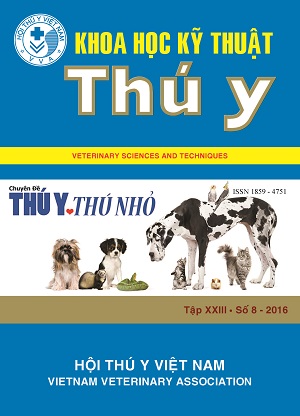Uterine tocodynamometry and some hematological indexes relating to parturition condition of bitch and neonatal puppy viability
Abstract
Dystocia is one of the common problems in bitches and in this case, neonatal puppies normally have poor viability. The objective of this study aimed to determine the effect of machine to measure uterine contraction intensity and to test some haematological indexes in diagnosing parturition condition (dystocia or normal parturition) of the bitches and neonatal puppy viability. In this study, 72 normal parturition bitches ( total 158 puppies) and 65 bitches (dystocia with Cesarean section producing 123 puppies) were measured uterine contraction intensity and blood tests. Immediately after delivery, a modified Apgar score (range: 0–8) was used to determine the neonatal puppy viability at 5-10 minutes.The bitches having a concentration of serum progesterone > 1ng/mL, serum calcium ≤ 8mmol/L, serum glucose ≤ 5 mmol/L or uterine contraction intensity ≤ 19 mmHg had high risk of dystocia (with OR was 2.1, 7.7, 9.0, 7.3, respectively). Number of red blood cells and serum protein concentration of bitches were not affected to neonatal puppy viability. In contrast, in both normal parturition and emergency C-section cases, Apgar score of the puppies was correlated with serum calcium, serum glucose and uterine contraction intensity, whereas inversely correlated with serum progesterone of their dams. The prognosis of puppy survival basing on parturition condition, uterine contraction intensity and haematological indexes could help to choose a reasonable therapy to support low Apgar score of the puppies.
điểm /
đánh giá
Published
2018-10-31
Issue
Section
Nghiên cứu khoa học

